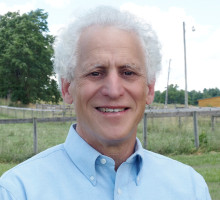
Reviews
...carefully researched and cogently argued book...While Powering American Farms is aimed primarily at historians of technology, it contains a wealth of detail that broadens its appeal beyond the field.
Decisively revising the dominant electrification narrative, Hirsh's richly documented account is more complex and nuanced than the New Deal tale that has for too long been seen as the last word on the subject. His argument also rests on a much deeper documentary foundation than the books he so effectively undermines. Emphatically recommended.
Putting forth numerous strands of evidence to complicate, and in some ways contradict, the narrative that the federal government heroically brought electric power to farms across the country, Hirsh's work is an important contribution to multiple disciplines. It's both a corrective and an ideal tutorial on how to address interesting historical questions.
Hirsh understands that sound revisionism consists not in replacing one myth with another but rather digging deeper into the material to produce a fuller, more complex story with enough detail to illuminate and clarify its context. This insightful book combines thorough research with full and informative documentation, logical organization, and solid writing.
Powering American Farms upends conventional accounts of rural electrification in the early twentieth-century United States. By shifting our sights from the New Deal to the 1920s, Hirsh shows how agricultural engineers at land grant colleges collaborated with the managers of private power companies to help bring America's farmers on-line.
Book Details
Preface
Introduction
Part I. Historical Context of Rural Electrification
1. The Standard Narrative and Its Defects
2. Unattractive Economics in the Rural Electricity Market
3. Business Attitudes toward
Preface
Introduction
Part I. Historical Context of Rural Electrification
1. The Standard Narrative and Its Defects
2. Unattractive Economics in the Rural Electricity Market
3. Business Attitudes toward Farmers in the 1920s
4. The Lure and Lore of Rural Electrification
5. Farmers on Their Own
Part II. Alignment of Rural Stakeholders
6. Utility Interest in Rural Electrification Awakens
7. The Unexpected Public Relations Value of Rural Electrification
8. The Industry Organizes the CREA
9. State Committees Work to Resolve Uncertainties
10. Regulation and the Extension of Lines to Rural Areas
11. Momentum in the Rural Electrification Subsystem
Part III. Growth of Rural Electrification Efforts in the 1930s
12. Government Innovations in the Rural Electrification Subsystem
13. Competition and Private Utilities in the REA Era
Conclusion
Notes
Index
Color plates follow page ___






